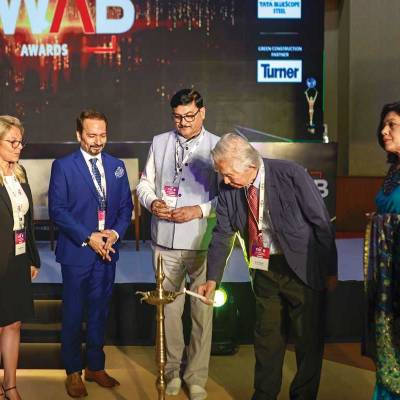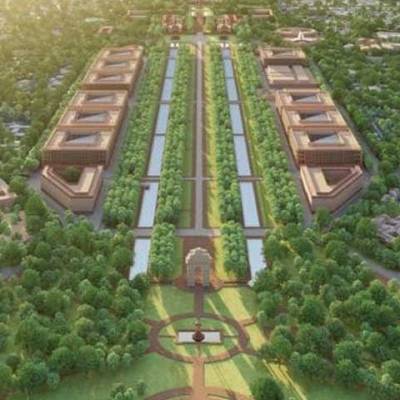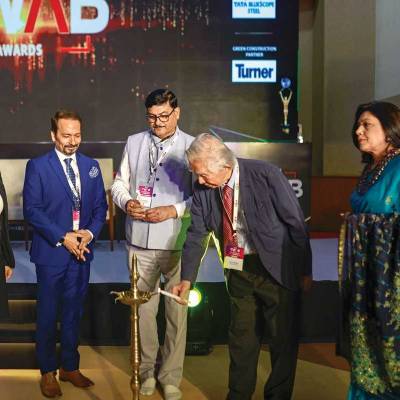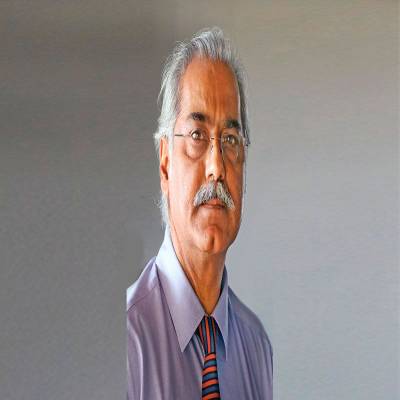- Home
- Real Estate
- How have legitimate tools like the India Architect Act and the Council of Architecture contributed to the fraternity?
How have legitimate tools like the India Architect Act and the Council of Architecture contributed to the fraternity?
Having evolved over the past 5,000 years, Indian architecture has held the power to transform the lives of people across the country. The country' architects have been successful in creating architecture that is adaptive, affordable, liveable and socio-culturally responsive. <p></p> <p>However, while architects have undoubtedly been contributing to the development of the country, what has been on offer to the benefit of the fraternity? While there have been legitimate tools like the India Architect Act (passed in 1972) and the Council of Architecture (CoA), how have these contributed to the betterment of these planners?</p> <p>Key challenges Today, there are over 60,000 registered architects practising in India. And, like every other profession, the architect fraternity faces its own set of challenges. </p> <p>Over the past few years, the number of architecture colleges has gone up to 478 and a fresh batch of nearly 20,000 architects will be graduating each year - about a third of current practising professionals. 'Our key challenge is the availability of jobs in the profession to skill these new graduates as architecture is an applied practice,' says <span style="font-weight: bold;">Manit Rastogi, Founding Partner, Morphogenesis.</span> </p> <p>'It is imperative that they find jobs in architectural practices or we may end up with a lost generation in a decade from now.' </p> <p>While Rastogi is concerned about availability of jobs, <span style="font-weight: bold;">Sharukh Mistry, Principal Architect, Mistry Architects,</span> says, 'We lack role models as we invariably look for heroes in the wrong places, when the real ones are among us. They are our teachers. They are actually the wind beneath our wings so that we all can fly. I know I had those teachers when I graduated, when I came out of an architectural institution.</p> <p>For a captain to steer his ship in such a scenario, with people noticing his every move and action, becomes difficult. Talking about project execution,<span style="font-weight: bold;"> Dikshu C Kukreja, Principal Architect, CP Kukreja Architects,</span> says, 'Although the accountabilities and responsibilities of architects are increasing in present times with government and private contracts, the role of a team leader seems to be diminishing.' He points out to the sudden surge of various project management companies and other technical advisors who could overrule and overshadow the role of a leader, heading a team of people from various disciplines, which the architect has been qualified to play. </p> <p> <span style="font-weight: bold;">Legitimate tools</span><br /> CoA was constituted by the Government of India under the provisions of the Architect Act, 1972, enacted by the Parliament of India, which came into force in September 1972. While the Act provides for registration of architects, standards of education, recognised qualifications and standards of practice to be complied with by practicing architects, CoA has been charged with the responsibility to regulate the education and practice of the profession throughout India, besides maintaining a register of architects. The Government of India has framed Rules and CoA has framed Regulations as provided for in the Architect Act.</p> <p>'The passing of the Architect Act in 1972 was definitely a landmark event,' says Rastogi. However, he adds, 'The Act needs to become relevant to the current practice, which is Indian yet global in context.'</p> <p>For his part, Mistry says, 'Any Act should be dynamic and has to change with time, else it will lose its effectiveness. While formulating the Act was done with a good focus to highlight the issues faced by the architect fraternity, we have to allow sharing of new ideas, debate and competing views to make it truly representative.<span style="font-size: 13.3333px;">'</span></p> <p>In the view of <span style="font-weight: bold;">Chitra Vishwanath, Principal Architect & Managing Director, Biome Environmental Solutions, CoA</span> does not benefit architects in a big way. 'It regularises a huge structure so there is good and healthy competition among people because people end up having competition on the basis of fees and not on the basis of the kind of work they do.' </p> <p>To a certain extent, the Architect Act and CoA are serving their purpose. However, Rastogi adds, 'The recent ruling by the High Court on the Act only protects the title, Architect (Ar), and not the Service. Architecture is an applied professional service and should be practiced by qualified architects.' He goes on to add that CoA needs to amend the Act urgently to retain the original vision of the architects, which is to create a global platform for contemporary Indian architecture. </p> <p> <span style="font-weight: bold;">What's next?</span><br /> In the present day, architecture has been widely incorporated into the curriculum of several colleges. There are institutions specialised for this as well, but the question remains: Are they fulfilling the requirements of the fraternity?</p> <p>Vishwanath responds to this, saying, 'With so many colleges, they should have better teaching. We require institutions that would make or will have pedagogy for teaching architecture. We need a lot of investment in that area.'</p> <p>Meanwhile, Mistry would like to start with students and budding architects, and simultaneously with faculty as well. 'I would like to look at humanities being taught at architectural schools because that is something that is clearly missing.' Architects need to go beyond the profession, says Rastogi, 'as it is traditionally practiced, and participate in governance and policymaking to ensure architecture is not just limited to building design under a predefined set of rules and regulations.' He also adds that architects should be involved in the formulation of bye-laws, master plans, urban planning guidelines and, to a certain degree, even economic and social policies.</p> <p>Kukreja concludes, saying, 'At present, there is a need to recognise the enormous efforts architects are investing in their projects across the country.'</p> <p>Indeed, India's planners and makers not only need recognition but an even wider window of opportunity to play a greater role in building India's infrastructure. And the jury's still out on whether CoA can step up to support the fraternity in a stronger way.</p> <p> Architectural Landmarks While there are many projects in India that would be considered architectural landmarks, CW PROPERTY TODAY asked three planners for their picks. For<span style="font-weight: bold;"> Manit Rastogi, Founding Partner, Morphogenesis,</span> The Pearl Academy in Jaipur is one such landmark; a campus which by virtue of its design is geared towards creating an environmentally responsive and passive habitat. 'It is an exemplar of inclusive architecture, which is socio-culturally relevant and inspired by the past while positioning itself within the contemporary architectural paradigm,' he says. The Pearl Academy won India's first World Architecture Festival Award (WAF) in 2009 for the Best Learning Building globally. </p> <p>The academy sets an example for creating a sustainable model for the future û an architecture that is global yet local. Over the years, it has become an indispensable part of the academic curriculum in various Ivy League universities such as Cornell University.</p> <p><span style="font-weight: bold;">Chitra Vishwanath, Principal Architect & Managing Director, Biome Environmental Solutions, </span>mentions the School of Architecture in Ahmedabad, which was built in the 1970s - till 2000 there was no other building tailor-made for studying architecture in India. 'This building was made for studying architecture and was one-of-its-kind at the time,' she says. 'Today, while few colleges have come up, this building created a culture, and that's what I call a landmark.' </p> <p>Apart from existing landmarks, many are on the anvil as well. For his part, <span style="font-weight: bold;">Dikshu C Kukreja, Principal Architect, CP Kukreja Architects</span>, points to the India International Convention Centre in Dwarka, Asia's second largest convention centre and the third largest in the world, designed to host the G20 Summit and other such mega international events, including international conferences, exhibitions and trade shows. 'The design is a representation of an integration between traditional architectural elements like jaalis, stepped wells, green open spaces and a lotus motif, which is embossed on the retractable roof of the indoor arena, to name a few, projected with a contemporary outlook through forms and spaces at the site,' he elaborates. 'The design has been conceptualised on the whole in a manner that would help develop the region in the long run, making sustainable development on such a scale a successful feat.'</p> <p> <span style="font-weight: bold;">- SHRIYAL SETHUMADHAVAN</span></p>




















